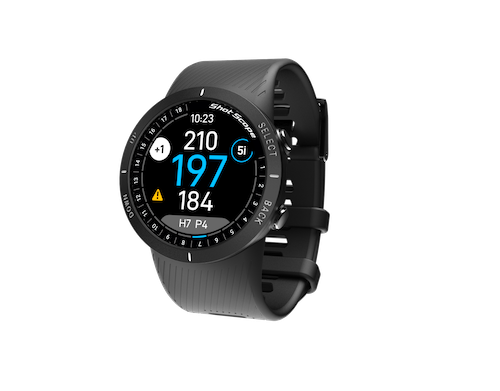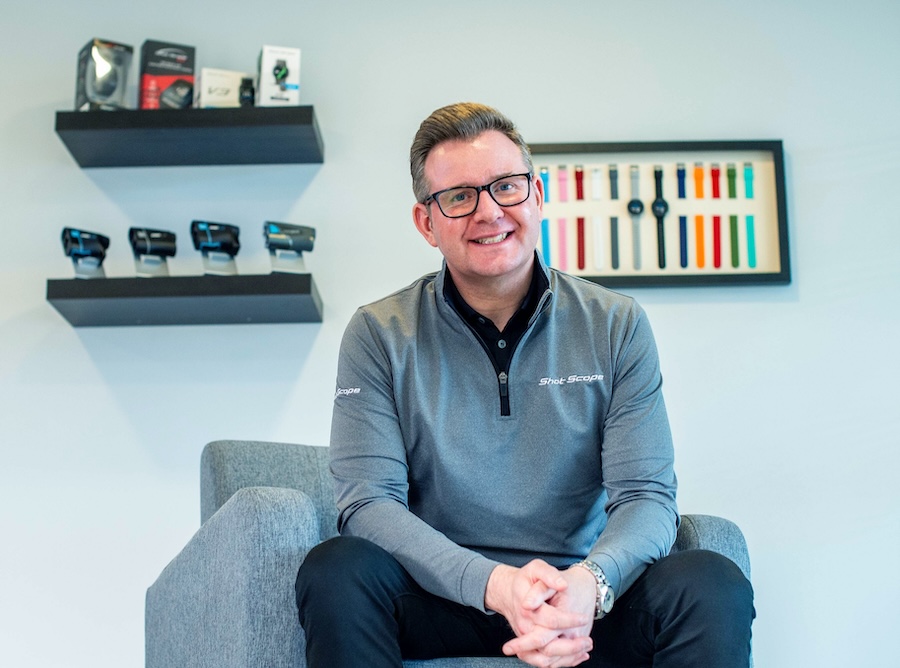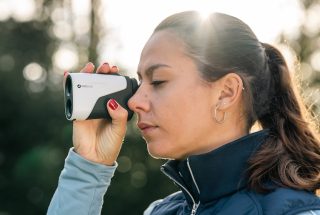Golfers are hungry for performance data. They want to know how far they hit each club, their playing tendencies, and where their strengths and weaknesses are. That’s why brands like Trackman, TopGolf Tracer, Arccos, and Shot Scope are excelling. Even data-driven Tour pros like Matthew Fitzpatrick – who famously tracks every shot he takes on the course and practice range – are doing very well because of it. As it turns out, manually gathering data about his own game was how David Hunter, CEO of Shot Scope, initially got into the game and created a company around it.
With a background in electronics and a Master’s Degree in engineering, the Edinburgh, Scotland native applied his experience from the corporate world, teaching, and consultancy to his real passion. “I was obsessed with golf in my 20s, and that is where my real hunger was – to design something in golf,” says Hunter, who in his teens was competitive at martial arts. “My martial arts instructor had this vision of it’s all about minimal gains on fitness, in psychology, and on technique. She had us document everything, record everything, study everything at detail, and then work hard to improve. And I had success doing that. When I got into golf, I was absolutely hooked – shooting in the 90s and hitting the ball quite well. But I wasn’t consistent. A lot of the people I played with had been playing golf since they were 10 years old and were hitting these beautiful, big draws and shooting in the 70s. And I was thinking how I am not hitting the ball straight. How am I going to get better? And I used the philosophies I learned at martial arts and engineering and started collecting data manually in eight notebooks – one for off the tee, approach, play, chipping, and putting – and also books for the range. I was obsessed.”
On the range, he’d hit five or 10 balls to the 100-yard marker, then the 50-yard marker, then the 150-yard marker, then walk out and measure the shot dispersion, write it in the notebook, and do it repeatedly. He was there for hours every session. “I would chip and run a 6-iron, and record how many of the 10 shots were within three feet of the target,” recalls Hunter. “And then I’d do it with a lob shot, bunker shots, and gather all of this data again and again. On the course, I would take the scorecard and make notes of where shots came up short, long, right, left.”
For six years, he gathered and studied data, and aggressively improved his golf game and handicap from 16 to 5. He’d even spend Sundays manually entering the data into spreadsheet software he’d developed. At the time, he was also looking for something else to do for a living.
“I remember one Sunday, entering all this data and thinking there must be a better way to do this,” he recalls. “And I took three pieces of paper and messed around with how I could track this data right in the technology that I know and came up with this idea. Believe it or not, it sat in a notebook for three years. But the crossing point happened when I went back to university to teach. I got an email about an entrepreneurship event in Edinburgh. I took an afternoon off work, went to this event, and met a group from the university that helped start-ups. I told them some of my ideas and said I was not really sure how to do anything with it. They advised me to enter this business competition.”

With his concept for a way to automatically track golf swing data, he raised some money – eventually establishing a relationship with the Sports Technology Institute of Loughborough. He designed his concept, and could use the institute’s test facilities and get advice.
“The whole idea was to have an automatic way of tracking stats without being a distraction to your golf game,” he says. “My whole premise was that golfers should play the game uninterrupted. Therefore, the first piece of technology was club tags that would talk with a device – sending data back and forth in close proximity.” And that technology has evolved exponentially into what’s now a set of club tags that communicate with a GPS watch. There are transmitters in the tags and an antenna in the watch band that send 35 pieces of data through 2.5 million lines of computer code, for every swing a golfer takes. Golfers ultimately only see the information pertinent to their swing.
Shot Scope also offers a variety of laser rangefinders, handheld devices, and watches to help golfers with distances, shot tendencies, and improving their performance.
Today, more than 300,000 golfers in 160 different countries use Shot Scope devices and the brand is the number two GPS device and rangefinder seller in the UK, which includes 300+ golf professionals in the U.K. selling its products and using them in lessons. Half of the Scottish company’s users reside in America, though, so Hunter and company are taking an ambitious approach to growing Shot Scope’s U.S. market share starting in 2025, with new products, advertising, and further developing its partnerships with PGA of America Golf Professionals and their facilities, as well as with large golf retail chains.
Thus, golfers everywhere are benefiting. “Players using our devices have improved by an average of 4.1 shots over their first 25 rounds using our watches,” says Hunter. “It’s really interesting. You need five-to-seven rounds before you start to see true insights and analytics. It can be scary when you start because you play for the first time with these products – you may think you hit your drives 250 yards, but you actually get less. Our data shows that most golfers actually hit the ball shorter on average than they thought.”
And that’s valuable information to know when you’re selecting a club for your next shot. Best of all, Shot Scope’s system includes no subscription fees and keeps all of your data, stats, and analytics in its ecosystem so you can access it any time. Which is far easier than searching for it in a notebook. Check out www.shotscope.com.
![]()




